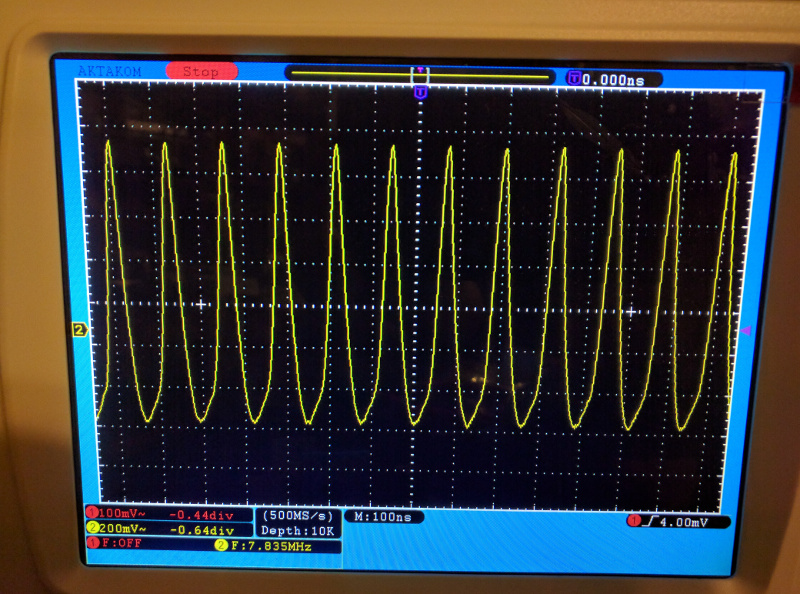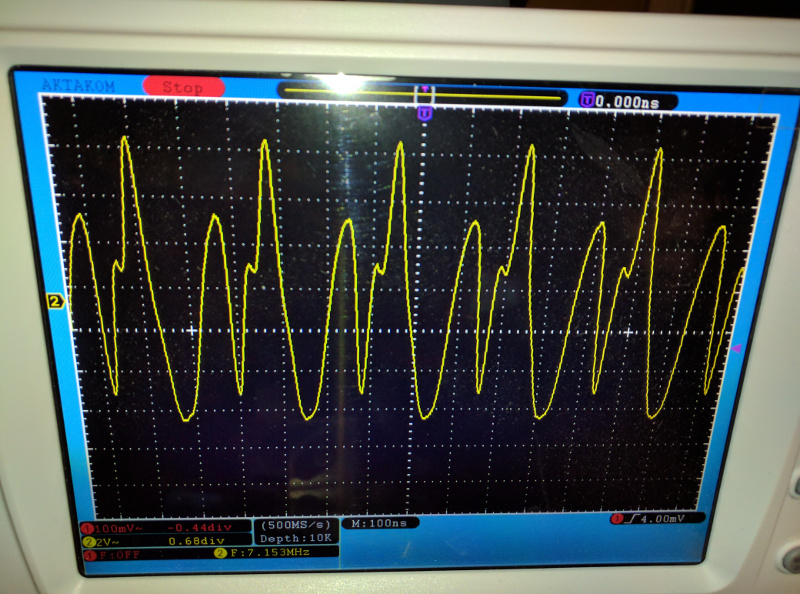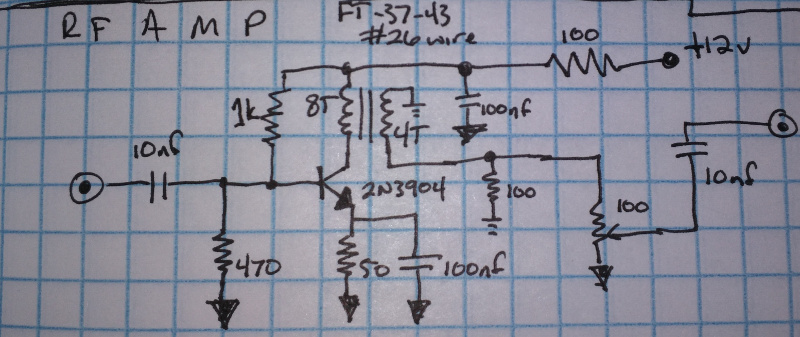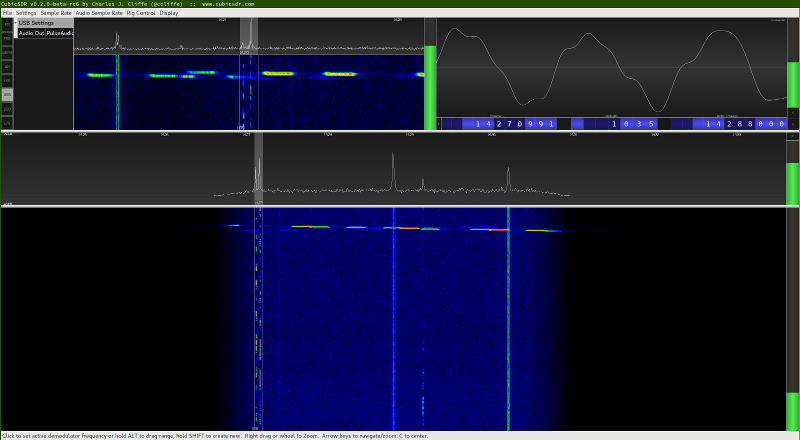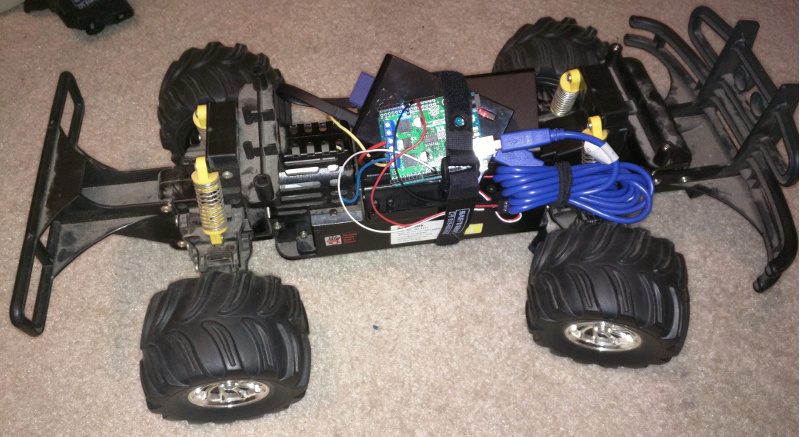I put together a little crystal tester circuit that I found on w2aew’s youtube channel. It works well. I built it almost exactly the same way that Alan does in his video.
You can see the sockets that were added to easily swap crystals in and out of the circuit. Here is the schematic.
And here is the resulting waveform for one of the crystals that I tested in the circuit.
Continuing the saga of my homebrew direct conversion receiver, I rebuilt it on copper clad with some minor changes. I added an LM317T voltage regulator so I could power the RF amp and audio amp with 12 volts while the arduino and mixer can be powered with 5 volts. I ran into some problems with the regulator and while I was measuring the output, a slip of the DMM probe sent 12 volts into the arduino, popping one of the capacitors on its internal regulator.
I’ve been listening to some of the older episodes of the soldersmoke podcast, and figured I’d put together one of the michigan mighty mite transmitters that they’ve mentioned so often. I even had a 3.579 colorburst crystal in the junk box. The michigan mighty mite is a very simple 7 component transmitter that is easy to build. It is a great first project for someone getting into homebrewing.
The schematics and more detailed instructions can be found here.
For labor day weekend, I had some extra time, so I put together the direct conversion receiver from the first chapter of EMRFD. I made some small changes to the circuit and used the si5351/arduino combo as the vfo.
The receiver uses a NE602 as the mixer and an LM386 as the audio amp. I connected it to my 40 meter dipole, but I wasn’t hearing anything. After playing around with it for a while, I put together a simple rf amp and added it to the input and that seemed to help.
I finally put together the SoftRock Lite II kit that I picked up a while back.
The kit itself was a pretty fun build, but when I was done, I couldn’t get it working with either of the laptops that I had at the time. They both had those combo headphone/mic jacks and I tried in linux and windows and I couldn’t get either to work. The only other computer in the house with an audio line in port (that was in an operable state) was my media server.
Since the last post, I have set up a raspberry pi and connected it to the arduino over usb. I configured wifi on the raspberry pi and I’ve written a simple python script to control the rover.
Now, I can ssh into the raspberry pi, launch the python script and I can remotely control the rover using the same keys from the arduino sketch (‘l’ for left, ‘r’ for right, etc.
